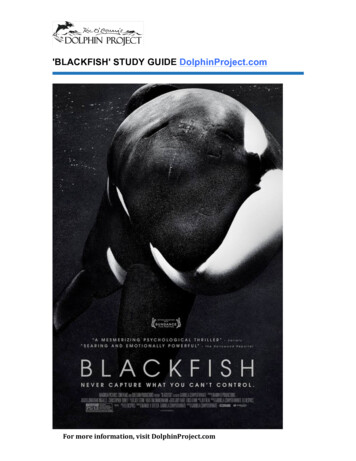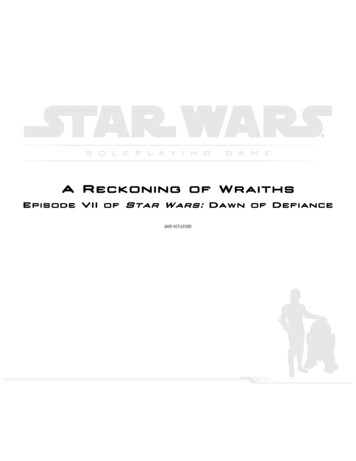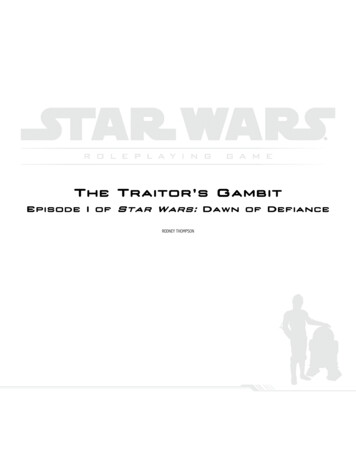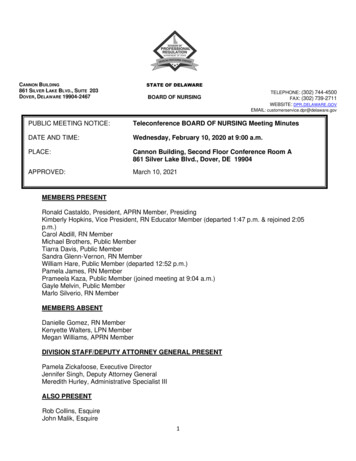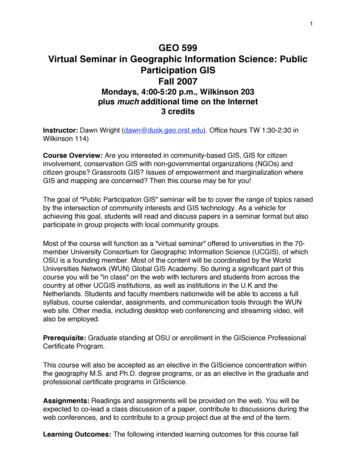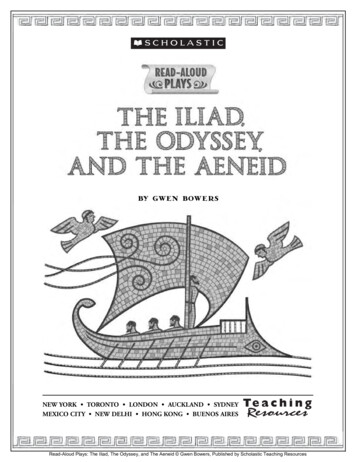
Transcription
AOBP with thanks to: DawnDillinger, DO Kyle Bodley, DO
Common maneuvers in some sports that canincrease risk for injury JumpingPivoting while runningSudden stopping while runningManeuvering a ball with your handThe most common areas of injury during theseactivities are ankle, knee and fingers The ankle is the most commonly injured joint inbasketball and volleyball, and often in soccer Inversion ankle sprainsAvulsion fractures of 5th metatarsalAchilles tendonitis and plantar fasciitisBursitis, tendonitis, periostitis
Distal tibia and fibular roof of ankle joint Talus fits into distal tibia and fibula The foot is supported laterally by 3 ligaments Anterior talofibular ligament Calcaneofibular ligament Posterior talofibular ligament Themedial side of ankle is supported by thedeltoid ligament
Musclesof the foot and ankle Anterior compartment of leg Tibialis anterior, extensor hallucis longus, extensordigitorum longus Lateral compartment of leg Peroneus longus, peroneus brevis Posterior compartment of leg Gastrocnemius and soleus complex, Achilles tendon Tibialis posterior, flexor digitorum longus, flexorhallucis longus
Sciaticnerve branches above knee into 2major divisions Tibial nerve Common peroneal nerve Splits into superficial and deep branches just distal tofibular head Superficial sensation lateral aspect dorsum of footand innervates peroneal mm. Deep sensation 1st and 2nd interdigital spaces anddorsiflexes the ankle and toes
15% of all sport-related injuries in primary care aresprained ankles Inversion injury (rolling inward of the ankle) is mostcommon mechanism of ankle injury The anterior talofibular ligament (ATFL) is theweakest and most frequently injured ligament ATFL injuries tend to occur most often in skeletallymature athletes (over 14 yrs old) ATFL sprains are diagnosed by pain with palpationof ligament or a positive anterior drawer sign Anterior drawer sign also helps grade the severityof the injury The more laxity that is present the higher the grade ofinjury
Usuallybest done with patient danglingleg over edge of exam table Physician cups one hand under the heel Other hand is placed over front of thetibia to provide counter pressure ( ) test significantly more anteriormovement of the joint compared to theuninjured ankle
Grade1: small percent ligamentousfibers disrupted Pain on motion, local tenderness, mild swelling Grade2: moderate percentageligamentous fibers torn Pain on motion, diffuse tenderness, moderateswelling, joint effusion, mild instablity Grade 3: ligament completely disrupted Severe pain, marked tenderness, markedswelling, joint instability
Needto differentiate ankle sprain fromfracture Sprains usually present as pain over affectedligament while the ankle rests in normalanatomic position Ankle fractures have maximal tenderness onboney anatomy (distal fibula, 5th metatarsal) Eversion sprains are rare and generallyinvolve both medial and lateral joint injury Need to rule out fractures with any eversionsprain
PlainX-rays can be obtained to helpdifferentiate sprain vs. fracture X-rays should be attained according to theOttawa ankle rules to rule out fractures Ottawa rules, however, were not developedspecific to pediatric patients and do not takeinto account possible growth plate injury If any doubt about diagnosis, better option inpediatrics is to X-ray the ankle and/or foot
Ankle X-rays: need if any of the following Boney tenderness at posterior edge of lateralmalleolus Boney tenderness at posterior edge of medialmalleolus Inability to bear weight both immediately afterinjury and when examined in office Foot X-rays: need if any of the following Boney tenderness at base of 5th metatarsal Boney tenderness at navicular Inability to bear weight, same as for ankle
Occurmore with inversion injuries inskeletally immature athletes Most common between 10-15 y/o Ankle fractures account for 5% ofpediatric fractures Present with boney tenderness topalpation specifically over distal fibularphysis Risk for potential growth arrest of area
Earlytreatment includes RICE: rest, ice,compression, elevation Early mobilization is important to maintainrange of motion Plantar flexion Dorsiflexion Foot circles Anklesplints/braces can allow for early weightbearing, not early return to play Crutches necessary when not able to bearweight Good ankle strengthening needed to preventre-injury
Somaticdysfunction can occur in addition tolocal ligamentous damage during an anklesprainSince sprains are traumatically induced,somatic dysfunction may not followexpected biomechanical motions Failure to diagnose and treat beyond theankle itself increases recurrence and canprolong healing
Supinationand plantar flexion occur withmost inversion sprains, along with: Eversion of the calcaneous Posterolateral glide at talocalcaneal joint Stretching and potential trigger pointdevelopment in peroneus muscles Distal fibula is drawn anteriorly with reciprocalposterior glide of fibular head Tibia can externally rotate with anteromedialglide of tibial plateau Femur internally rotates
JAOA2003 prospective, randomized controlledtrial that evaluated the efficacy of OMT forpatients in the ER with grade 1 and 2 acuteankle sprains Included 55 patients 18 yrs and older whopresented within 24 hours of ankle injury Randomly assigned OMT group or control group Both groups evaluated for edema, range ofmotion (ROM) and pain (compared to uninjuredankle) Pain measured with a 1-10 visual analog scale No difference in measures between 2 groups atbaseline
SpecificOMT used on each patientvaried according to exam findings butincluded a combination of the following Soft tissue and fascial techniques Muscle energy Strain counterstrain Lymphatic drainage Durationof OMT session was 10-20 min
Immediatelyafter OMT the ankle was reevaluated for edema, ROM and pain Both groups received standard medicalcare including RICE and NSAIDS Follow-up exam on all patients at 5-7days to repeat all measures above
Resultsshowed that immediately after the 1session in the ER, the OMT group had astatistically significant improvement in edemaand pain A trend toward increased ROM after OMT (whencompared to the control group) was notstatistically significant at immediate reassessment At 1 week follow-up: both groups had animprovement in edema and pain At 1 week follow-up: there was a statisticallysignificant improvement in the ROM in the OMTgroup compared to the control group
Authorsconcluded that there is both animmediate advantage and delayedbenefit to the addition of OMT tostandard medical care in the treatment ofankle sprains
RecommendedOMT based on commonpatterns of injury and somatic dysfunction Palpate fibula and tibia to identify and treat a torsion of the interosseous ligament with soft tissue techniqueTreat posterior fibular headAttention to the foot especially cuboid bone which maybe dropped and need to be reducedMuscle energy and or strain-counterstrain for dysfunctionof fibularis muscles and associated tendonsStrain-counterstrain directly on ATFL, especially Grade 1sprainsLymphatic drainage to reduce pain from edema
1:Patient is on their side with the affected leg up2:Physician is seated beside the table3:The tender point is located, typically anterior to thelateral malleolus4:The ankle is everted until the tissues soften and thepatient reports maximal relief at the tender point5:The position is held for 90 seconds and then theankle is brought back to the neutral position and thetender point is reassessed
The goal is to 3-dimensionally balance and relievetension across the jointEvaluate and treat with the knee in full extension, thenin various degrees of flexion as the tissues easeWith a combination of traction, compression, twistingand bending, find the point of balance in the tissue,then hold until maximum ease is accomplishedAs the leg moves toward ease, the myofascial tensionreleasesMay be fast or slow release depending on individualtissue
Patient is in the supine positionThe physician stands on the side of the involved legThe physicians cephalad hand stabilizes the patient’s kneeand holds the posterior fibular head between his thumb andindex finger.The physicians other hand inverts and plantar flexes the foot(into barrier)Direct patient to evert foot against the counterforce of thephysician on the dorsum of footThe patient relaxes for 2-3 seconds and then the process isrepeated until no new barriers are encountered and normalrange of motion is restored
Whenankle is not tender to palpation When strength is equal in both ankles When athlete can stand with eyes closedand balance on injured side for 30 sec. Expect at least 2 weeks from injury toreturn to play, but can be longerdepending on degree of injury
Which of the following is the most common type ofankle sprain?A. AversionB. EversionC. InversionD. ReversionE. Rotation
Which of the following is the weakest ligament of theankle and most likely to be damaged in a sprain?A. Anterior talocalcanealB. Anterior talofibularC. CalcaneofibularD. Posterior talocalcanealE. Posterior talofibular
Which of the following OMT modalities is most helpfulin the management of an acute ankle sprain?A. CraniosacralB. HVLA fibular headC. Muscle energy thoracicD. Rib raisingE. Strain-counterstrain ATFL
A 16 year old presents to ER with ankle pain aftersoccer practice and is diagnosed with a grade 2sprain. OMT is performed in the ER for the anklesprain. Which of the following is an expectedoutcome immediately after OMT?A. Decreased ROM of ankleB. Less ankle painC. Less need for NSAIDSD. Improved ROM of ankleE. Increased swelling of the ankle
An 11 year old boy presents to your office with rightankle pain after rolling his ankle during a basketballgame in gym. His ankle is swollen and he hastenderness along the posterior edge of the distalfibula. Which of the following is the most appropriate?A. ACE wrap ankle and crutchesB. ObservationC. OMTD. Return to playE. X-ray ankle
Kliegman R, Jenson H, Behrman R, Stanton B. Nelsontextbook of pediatrics, 18th ed. Philadelphia, PA.Saunders Elsevier; 2007.Metzl J, et al. Sports medicine in the pediatric office.Elk Grove, IL. American Academy of Pediatrics; 2008.Blood S. Treatment of the sprained ankle. JAOA. 1980;79: 680-692.
Eisenhart A, Gaeta T, Yens D. Osteopathic manipulativetreatment in the emergency department for patientswith acute ankle injuries. JAOA. 2003; 103 (9): 417-421.Zitelli B, Davis H. Atlas of pediatric physical diagnosis,5th ed. Philadelphia, PA. Mosby Elsevier; 2007.Ward R. Foundations for osteopathic medicine.Baltimore, MD. Williams and Wilkins; 1997.
If any doubt about diagnosis, better option in pediatrics is to X-ray the ankle and/or foot . Zitelli B, Davis H.
